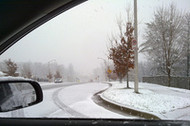Preparing Your Car for Winter Weather
3rd Dec 2015

December 21 marks the official start of the winter. If you haven't done so already, you should use this time to prepare your car for the change of seasons. Winter weather can wreck havoc on automobiles, increasing wear and tear both internally and externally. So, what steps can you take to better prepare your car for winter?
Check Coolant Levels
When was the last time that you checked your car's coolant (antifreeze) levels? As the temperatures begin to drop, there's a greater risk of damaging occurring to your radiator -- especially when there's little-to-no coolant present. Coolant, which is a mixture of ethylene or propylene glycol and water, is primarily used to protect against overheating, but it's also used to protect against freezing. According to CarCare.org, coolant should be flushed and replaced at least once every two years.
Related Reading: Why is My Car Low on Coolant?
Check Your Tires
Drivers should routinely check their tires year-round, but it's particularly important to do so during the winter. Icy roads pose a serious risk to motorists driving with worn-out tires. If there's not enough tread left on your tires, you won't be able to gain proper traction with the road, placing you at a greater risk for a collision. Check both the tread and air pressure of your tries, ensuring it meets the manufacturer's specifications.
Related Reading: How to Choose the Right Tires for Your Car
Check the Lights
Headlights usually last roughly 5-10 years before dying. As they approach the end of their life, however, they become dimmer and produce less light. This can make driving in a snow storm downright dangerous, as you'll have a difficult time seeing the road, and other drives may also have trouble seeing you. Check your headlights, and if necessary, replace them with new ones.
Related Reading: Only 1 in 31 Cars Have 'Good' Headlights
Check the Brakes
Of course, you should also check your car's brakes, ensuring the pads are still intact and not worn out to the point where it's creating a grinding metal-on-metal noise. Worn-out pads pose a serious risk, especially during the winter.
Related Reading: 4 Signs Your Car's Brakes Need Servicing
Check the Battery
Pop the hood and check your car's battery terminals. Is there rust/corrosion present? Is the battery leaking acid? The dry air combined with the cold temperatures can disturb automotive batteries, which is why you see so many people jumping their cars during this time of year. Make sure your battery is connected with clean terminals, and that it has a strong charge.
Related Reading: Is it the Battery or the Alternator?

